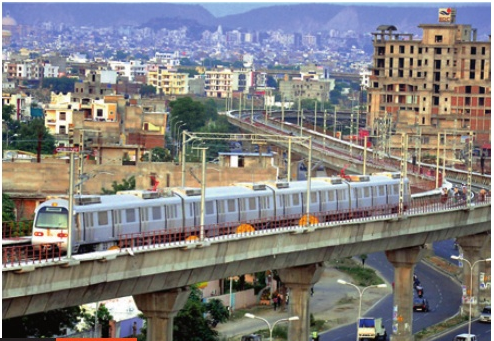
History
The city of Jaipur was founded in 1727 by Jai Singh II, the Raja of Amer who ruled from 1688 to 1743. Initially, his capital was Dausa, which lies 51 km from Jaipur. He felt the need of shifting his capital city with the increase in population and growing scarcity of water. The King consulted several books on architecture and architects before making the layout of Jaipur. Finally, under the architectural guidance of Vidyadhar Bhattacharya, (initially an accounts-clerk in the Amer treasury, later promoted to the office of Chief Architect by the King) Jaipur came into existence on the classical principles of Vastu Shastra and similar classical treatises.
After waging battles with the Marathas, Maharaja Sawai Jai Singh II wanted to improve the security aspects of the city. Being a lover of astronomy,mathematics and astrophysics, Jai Singh sought advice from Vidyadhar Bhattacharya, a Brahmin scholar of Bengal, to aid him in designing many buildings, including the Royal Palace in the centre of the city.
The construction of the city began in 1727. It took around four years to complete the major palaces, roads and square. The city was built following the principles of Shilpa Shastra, the science of Indian Architecture. The city was divided into nine blocks, two of which contain the state buildings and palaces, with the remaining seven allotted to the public. Huge ramparts were built, pierced by seven fortified gates. For a time, during the rule of Sawai Ram Singh, the whole city was painted pink to welcome Edward, Prince of Wales. Today, avenues remain painted in pink, giving Jaipur a distinctive appearance.[5] In the 19th century, the city grew rapidly; by 1900 it had a population of 160,000. The wide boulevards were paved and the city had several hospitals. Its chief industries were the working of metals and marble, fostered by a school of art (named Madarsa Hunree) founded in 1868. The city had three colleges, including a Sanskrit college (1865) and a girls' school (1867) opened during the reign of the enigmatic Maharaja Sawai Ram Singh II. There was a wealthy and enterprising community of native bankers, the Marwaris; and the administrators Rawana rajput.
Fairs & Festival
Primarily, Jaipur has four majors fairs and festival which happens on yearly basis: Elephant Festival, Gangaur, Kite Festival Jaipur, Teej. Jaipur is also famous for itsJaipur Literature Festival in which country-wide authors, writer and literature lovers participate in it.